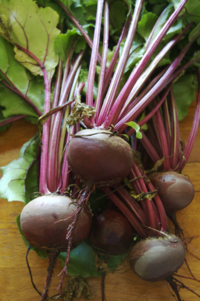
Photo from wikipedia
In this research, commercially available, carrot juice was explored as alternative feedstock for production of bacterial cellulose (BC) by Gluconacetobacter hansenii (ATCC® 23769TM). Two types of culture media were used:… Click to show full abstract
In this research, commercially available, carrot juice was explored as alternative feedstock for production of bacterial cellulose (BC) by Gluconacetobacter hansenii (ATCC® 23769TM). Two types of culture media were used: Hestrin–Schramm (HS) and the carrot juice medium and these culture media were incubated statically for 10 days. The effect of different volumes of media on the microbial process and the utilization of substrates by the bacteria, were also examined. The produced BC was analyzed using X-ray diffraction (XRD), scanning electron microscopy (SEM), thermogravimetric analysis (TGA), and Fourier transform infrared spectroscopy (FT-IR). The water holding capacity (WHC) did not vary greatly with 210 mL (38.6 %), 310 mL (35.4 %), 360 mL (36.4 %) and 410 mL (37.3 %) of carrot juice media, however the WHC of 310 mL HS media (77.1 %), actually achieved a greater WHC, compared to 410 mL of HS media (55.8 %). BC produced in the carrot juice media showed higher yields than cellulose produced in HS media, with values of 1.19 g, 1.35 g, 1.33 g and 1.21 g for media with 210 mL, 310 mL, 360 mL and 410 mL, respectively. According to XRD and TGA results, there were no signifi cant differences in the crystallinity and thermal stability of cellulose produced between HS and the carrot juice medium. FT-IR of BC from HS and carrot juice medium also demonstrated a similar spectrum to alpha cellulose and microcrystalline cellulose.
Journal Title: Drvna Industrija
Year Published: 2018
Link to full text (if available)
Share on Social Media: Sign Up to like & get
recommendations!